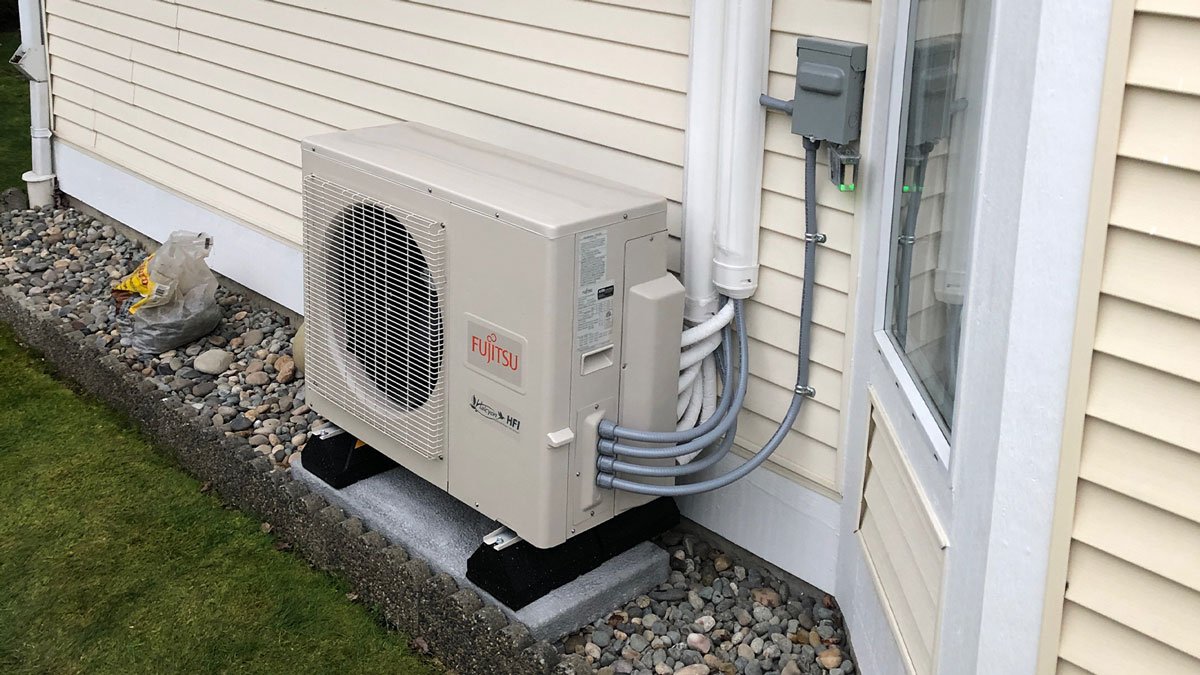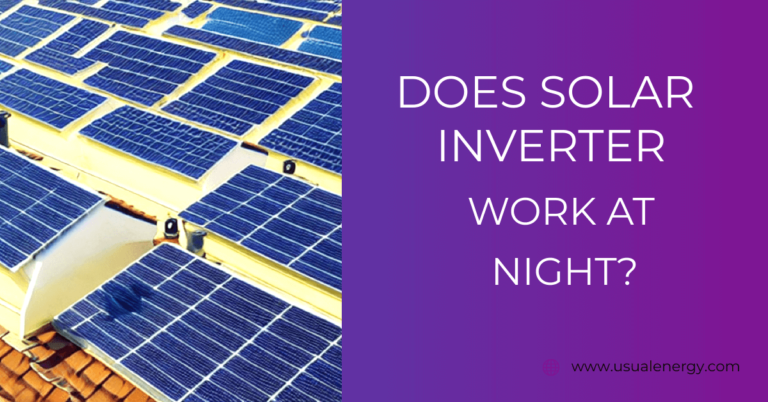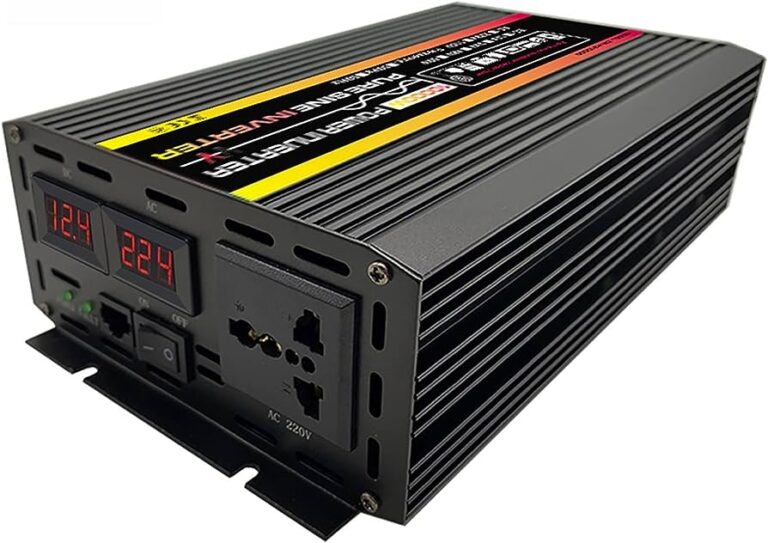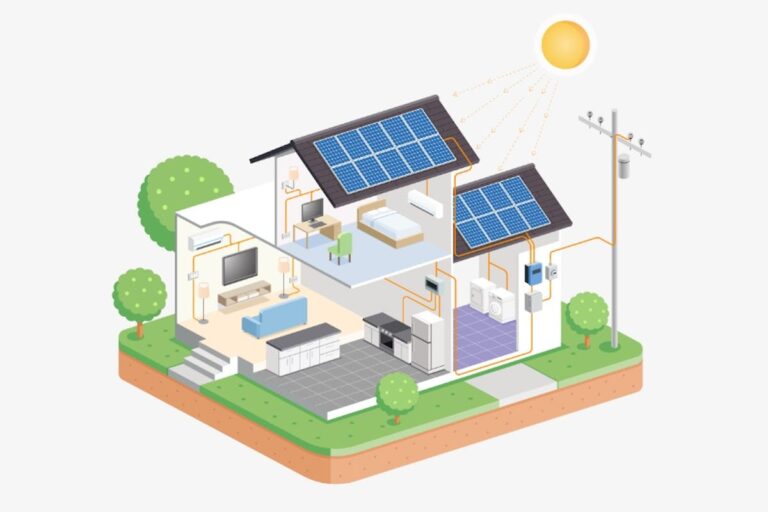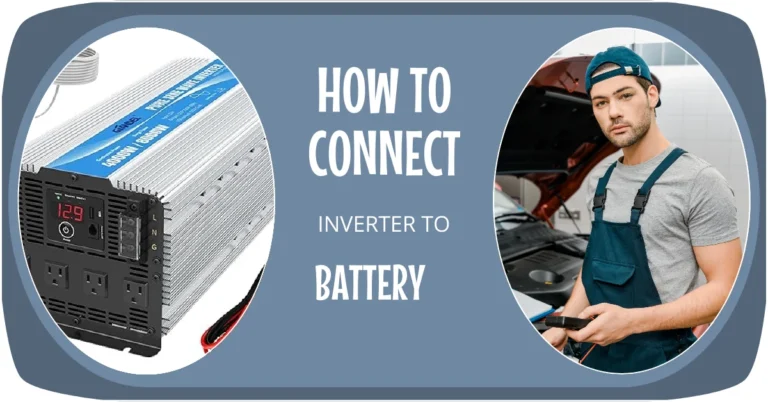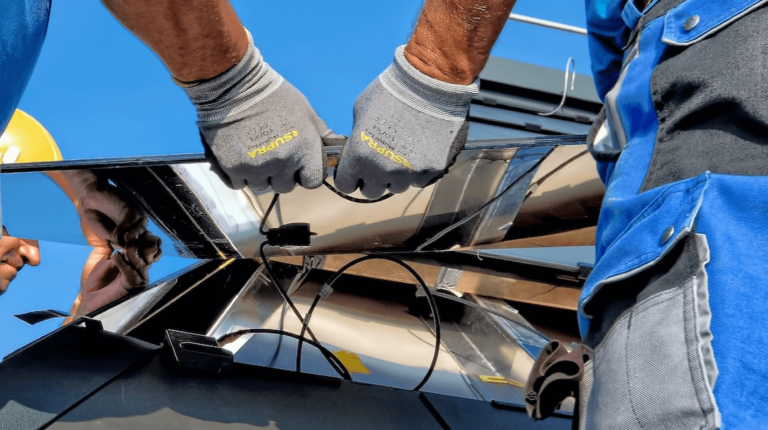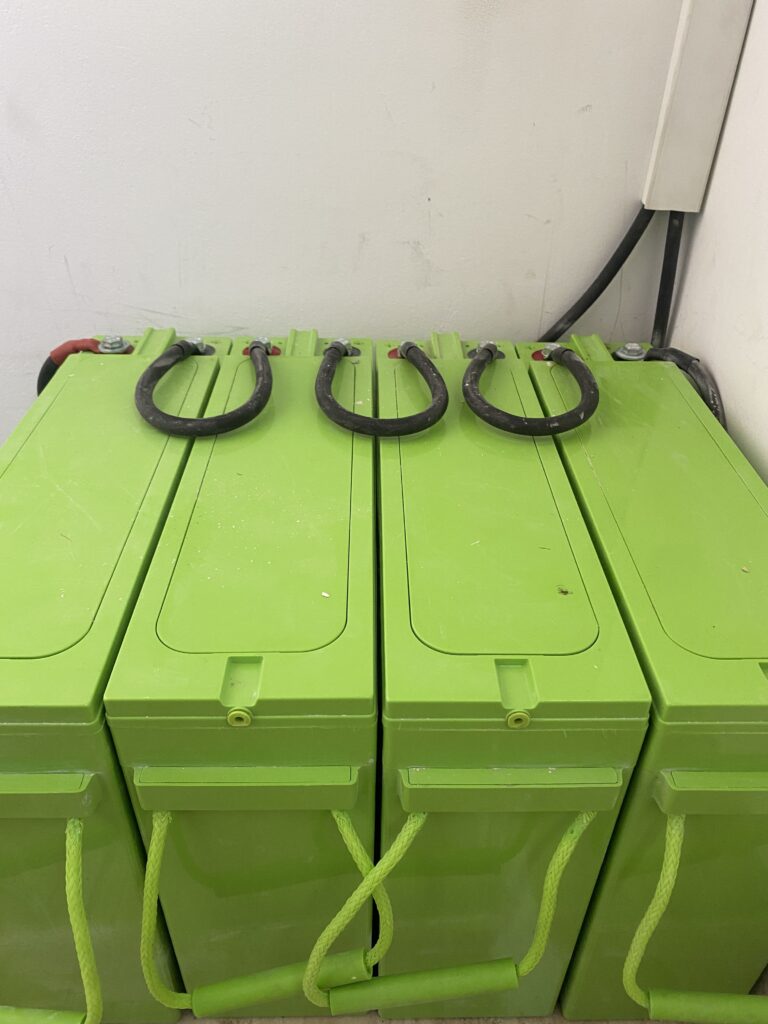What is a Mini Split Inverter? Your Ultimate Guide
A mini split inverter is a type of mini split system that utilizes an inverter compressor to regulate the cooling or heating output based on the desired temperature, resulting in more efficient and precise temperature control compared to a standard mini split system. With a mini split inverter, the compressor adjusts its speed continuously, eliminating the need for frequent on/off cycles and providing consistent comfort while saving energy.
These systems are highly efficient and can help reduce energy consumption and utility bills. Additionally, they offer quieter operation, improved indoor air quality, and flexibility in zoning and temperature control. Overall, a mini split inverter is a valuable investment for both residential and commercial spaces.
Understanding Mini Split Inverters
A mini split inverter is a cooling unit that adjusts its output to maintain temperature without cycling on and off. This efficient technology ensures consistent comfort in your home without wasting energy.
Definition And Purpose Of A Mini Split Inverter:
- A mini split inverter is a type of heating and cooling system that utilizes advanced technology to regulate the temperature in a space efficiently.
- Unlike traditional mini split systems that operate at a fixed speed, mini split inverters can adjust the compressor’s speed according to the room’s requirements.
- The purpose of a mini split inverter is to provide precise temperature control, improved energy efficiency, and consistent comfort in residential and commercial spaces.
How Mini Split Inverters Differ From Traditional Mini Split Systems:
- Mini split inverters use inverter technology to control the compressor’s speed, allowing it to operate at variable speeds, ranging from low to high, depending on the heating or cooling demands.
- Traditional mini split systems operate at a fixed speed, either at maximum capacity or turned off completely.
- Mini split inverters constantly adjust their capacity to maintain a stable indoor temperature, resulting in reduced energy consumption and lower utility bills.
- Traditional mini split systems consume more energy as they repeatedly turn on and off to meet the desired temperature.
- Mini split inverters provide more precise temperature control and ensure a more comfortable environment by eliminating frequent temperature fluctuations.
- Traditional mini split systems can create noticeable temperature differences between the supply air and the room due to the on/off cycling.
Benefits Of Using A Mini Split Inverter:
- Energy efficiency: Mini split inverters can save up to 30% on energy consumption compared to traditional mini split systems due to their variable speed operation. The ability to adjust the compressor’s speed according to the load requirements reduces energy wastage.
- Cost savings: Lower energy consumption translates into reduced utility bills, resulting in significant long-term cost savings.
- Enhanced comfort: Mini split inverters provide consistent and precise temperature control, preventing temperature swings and maintaining a comfortable indoor environment. The ability to adjust the compressor’s speed ensures even cooling and heating distribution throughout the space.
- Quiet operation: Mini split inverters operate at lower speeds, resulting in quieter operation compared to traditional mini split systems, which can be especially beneficial for bedrooms and other noise-sensitive areas.
- Extended lifespan: The variable speed operation of mini split inverters reduces wear and tear on the compressor, extending its lifespan compared to traditional mini split systems that frequently turn on and off.
- Eco-friendly: By reducing energy consumption, mini split inverters help lower carbon emissions and contribute to a greener and more sustainable environment.
- Easy installation: Mini split inverters are relatively easy to install, requiring minimal ductwork or renovation. They can be a cost-effective and space-saving solution, especially for homes and buildings without existing ductwork.
Remember, when it comes to choosing the right heating and cooling system, understanding the benefits and differences of mini split inverters can help you make an informed decision. With their energy efficiency, enhanced comfort, and cost savings, mini split inverters offer a compelling solution for your heating and cooling needs.
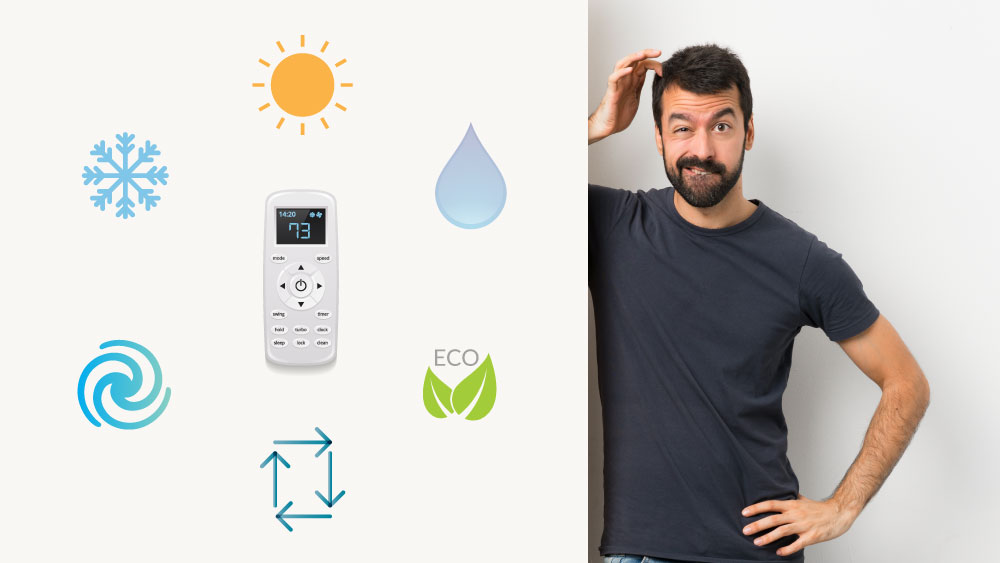
Credit: cielowigle.com
How Does A Mini Split Inverter Work?
A mini split inverter constantly adjusts its output to efficiently maintain temperature without cycling between on and off, unlike a regular mini split. It provides consistent cooling by pumping cool air at a steady speed and output rate.
Mini split inverters are a popular type of air conditioning system that offers efficient cooling and heating capabilities. Understanding how a mini split inverter works can help you make an informed decision when choosing the right system for your needs.
Let’s explore the key components and their roles in the operation of a mini split inverter system.
Introduction To The Components Of A Mini Split Inverter System
A mini split inverter system consists of several important components that work together to provide efficient cooling and heating. These components include the compressor, electric expansion valve, thermostat, and more. Each component has a specific role in the system’s operation.
- Compressor: The compressor is a vital component of a mini split inverter system. It is responsible for circulating the refrigerant and increasing its pressure, which allows it to absorb heat from the indoor surroundings.
- Electric Expansion Valve: The electric expansion valve controls the flow of refrigerant into the evaporator coil. It regulates the amount of refrigerant entering the coil, resulting in precise temperature control and improved energy efficiency.
- Thermostat: The thermostat acts as a control device in a mini split inverter system. It senses the temperature of the room and signals the system to adjust the cooling or heating operation accordingly. The thermostat allows users to set their desired temperature and ensures optimal comfort.
Overview Of The Compressor And Its Role In The System
The compressor in a mini split inverter system plays a crucial role in the cooling and heating process. Here’s how it works:
- The compressor receives low-pressure refrigerant vapor from the evaporator coil.
- It compresses the refrigerant gas, increasing its pressure and temperature.
- The hot, high-pressure refrigerant then flows to the condenser coil, releasing heat to the outside environment.
- As the refrigerant loses heat, it condenses into a liquid state.
- The liquid refrigerant then flows to the electric expansion valve for further regulation and distribution.
Understanding The Operation Of Inverter Technology
Inverter technology is a key feature of mini split inverters that contributes to their energy efficiency. Here’s an overview of how inverter technology works:
- Traditional air conditioning systems operate at a fixed speed, constantly turning on and off to maintain the desired temperature. This frequent cycling can lead to energy wastage and temperature fluctuations.
- Inverter technology allows the compressor to operate at variable speeds. It adjusts the compressor’s speed based on the cooling or heating demand, leading to precise temperature control and reduced energy consumption.
- The inverter technology continuously adjusts the compressor’s speed to match the required temperature, resulting in a more consistent and comfortable indoor environment.
Explaining The Role Of The Electric Expansion Valve
The electric expansion valve plays a critical role in a mini split inverter system. Here’s how it functions:
- The electric expansion valve is located between the condenser and evaporator coils.
- It controls the flow of refrigerant into the evaporator coil, where heat exchange occurs.
- By regulating the amount of refrigerant entering the evaporator coil, the electric expansion valve ensures efficient heat transfer and precise temperature control.
Highlighting The Function Of The Thermostat In Controlling The System
The thermostat is an essential component of a mini split inverter system that allows users to control the system’s operation. Here’s what the thermostat does:
- The thermostat senses the room temperature and compares it to the desired set temperature.
- Based on the temperature difference, the thermostat signals the system to adjust the cooling or heating operation.
- The thermostat ensures that the system maintains the desired temperature and provides optimal comfort.
Discussing The Winter Operation And Defrosting Cycle
During the winter season, a mini split inverter system may encounter frost buildup on the outdoor unit’s coils. To address this issue, the system goes through a defrosting cycle. Here’s how it works:
- When frost buildup is detected, the defrosting cycle is initiated.
- The system temporarily switches to cooling mode, causing the outdoor unit’s coils to heat up.
- The heated coils melt the frost, which then drips off the unit.
- After the defrosting cycle, the system resumes heating mode, ensuring the continuous warmth of the indoor environment.
Understanding how a mini split inverter works can help you maximize its performance and efficiency. By considering the roles of each component and the operation of inverter technology, you can make informed decisions when selecting and maintaining a mini split inverter system.
Is an Inverter on a Generator the Same as a Mini Split Inverter?
Yes, understanding generator inverters. An inverter on a generator serves a different purpose than a mini split inverter. While both involve inverter technology, a generator inverter converts DC power into AC power to run household appliances during a power outage. On the other hand, a mini split inverter regulates the speed of the compressor in a ductless air conditioning system for more energy-efficient cooling.
Advantages And Disadvantages Of Mini Split Inverters
A mini split inverter is a type of air conditioning system that provides both heating and cooling. Its main advantage is its energy efficiency, as it adjusts its output to maintain a consistent temperature. However, the initial cost and installation process can be more expensive compared to traditional HVAC systems.
Mini split inverters have become increasingly popular in residential and commercial spaces due to their energy efficiency, precise temperature control, and reduced environmental impact. However, like any other HVAC system, mini split inverters also have their own set of pros and cons.
Below, we explore the advantages and disadvantages of using a mini split inverter system:
Pros Of Using A Mini Split Inverter System:
- Energy efficiency and cost savings: Mini split inverters are known for their high energy efficiency ratings, which can result in significant cost savings on energy bills. These systems use advanced inverter technology, which allows them to adjust the compressor speed based on the current cooling or heating needs, ensuring optimal energy usage.
- Better temperature control and comfort: Mini split inverters provide superior temperature control compared to traditional HVAC systems. With independent temperature zones, you can customize the comfort level in different areas of your home or office. Additionally, the inverter technology ensures that the desired temperature is maintained consistently, eliminating uncomfortable temperature fluctuations.
- Reduced environmental impact: Mini split inverters are a more environmentally friendly option compared to traditional systems. Their energy-efficient operation means lower greenhouse gas emissions, contributing to a greener environment. They also use a refrigerant called R410A, which has a lower impact on the ozone layer.
Cons Of Using A Mini Split Inverter System:
- Higher upfront cost compared to traditional systems: The initial cost of installing a mini split inverter system can be higher than that of a traditional HVAC system. However, it’s important to consider the long-term savings in energy costs to determine the overall cost-effectiveness.
- Noise levels and potential aesthetic concerns: While mini split inverters are generally quieter than window AC units, they can still produce some noise, especially at higher compressor speeds. Additionally, the indoor units will be visible in the rooms where they are installed, which may not be aesthetically pleasing for some individuals.
- Complexity of installation and maintenance: Installing a mini split inverter system requires professional expertise and may involve more complex installation procedures compared to traditional systems. Similarly, regular maintenance is essential to keep the system running efficiently. It is recommended to have a qualified technician handle the installation and maintenance to ensure optimal performance.
Mini split inverters offer several benefits such as energy efficiency, better temperature control, and reduced environmental impact. However, they come with a higher upfront cost, potential noise issues, and may require professional installation and maintenance. Considering these factors, it’s important to weigh the pros and cons before making a decision about installing a mini split inverter system in your space.
Choosing The Right Mini Split Inverter For Your Needs
Looking to choose the right mini split inverter for your needs? A mini split inverter is a type of air conditioning system that uses variable speed technology to efficiently maintain the desired temperature without constantly turning on and off. This technology helps save energy and provides consistent comfort.
When it comes to selecting a mini split inverter system for your space, there are several factors to consider. From size and capacity requirements to energy efficiency ratings and additional features, finding the right mini split inverter can make a significant difference in your comfort and energy consumption.
To help you make an informed decision, here are some key factors to keep in mind:
- Size and capacity requirements for your space:
- Assess the square footage and layout of your space to determine the appropriate size and capacity of the mini split inverter system.
- Consider factors such as insulation, ceiling height, and number of windows to ensure optimal efficiency and cooling/heating distribution.
- Energy efficiency ratings and SEER values:
- Look for mini split inverters with high SEER (Seasonal Energy Efficiency Ratio) ratings, as a higher rating indicates better energy efficiency.
- Energy-efficient mini split inverters can help reduce energy costs and minimize your carbon footprint.
- Additional features and customization options:
- Explore the various features and customization options available in mini split inverters.
- Some models offer features like Wi-Fi connectivity, smart home integration, sleep mode, and adjustable fan speeds for enhanced control and convenience.
Popular brands and models of mini split inverters:
- Senville LETO SENL-09CD: A popular choice known for its energy efficiency, quiet operation, and reliable performance.
- Pioneer WYS024G: This model offers a range of capacities and features advanced technology for energy-efficient cooling and heating.
- MRCOOL DIY 3rd Gen SEER Ductless Mini-Split: Known for its easy installation process and DIY-friendly design, this model is a popular choice for homeowners.
Installation and maintenance considerations for mini split inverters:
- Hiring a professional HVAC technician for installation is recommended to ensure proper installation and optimal performance.
- Regular maintenance, such as cleaning filters and checking refrigerant levels, is essential for the smooth operation and longevity of the mini split inverter system.
By considering these factors and exploring different brands and models, you can choose the right mini split inverter system that meets your specific needs and provides efficient cooling and heating for your space.
Frequently Asked Questions For What Is A Mini Split Inverter?
What Is The Difference Between A Mini Split Inverter And A Mini Split?
A mini split inverter adjusts its output to maintain temperature efficiently, while a regular mini split has a fixed on/off cycle.
Is An Inverter Mini Split Worth It?
Yes, an inverter mini split is worth it due to its efficiency and compared to a standard rotary compressor.
Why Are Mini Splits Called Inverters?
Mini splits are called inverters because their compressor constantly adjusts the output for efficient temperature maintenance.
What Is The Difference Between Inverter And Rotary Mini Split?
The main difference between an inverter mini split and a rotary mini split is how they maintain temperature. A rotary mini split turns on and off at the same speed and output rate to reach the desired temperature, while an inverter mini split continuously adjusts its output to efficiently maintain temperature without cycling between on and off.
Conclusion
Ts ability to efficiently maintain temperature without having to constantly cycle between on and off. This means that it can provide consistent cooling or heating without any fluctuations, resulting in enhanced comfort levels in your home. Another benefit of a mini split inverter is its energy efficiency.
The inverter technology allows the compressor to adjust its output according to the cooling or heating demands of the space, which helps to minimize energy consumption. This not only reduces your carbon footprint but also saves you money on your utility bills.
Additionally, mini split inverters operate quietly, making them ideal for bedrooms, living rooms, or any other space where noise could be a concern. With advanced features like programmable thermostats and remote control options, they also offer convenience and ease of use.
A mini split inverter is a smart choice for efficient and customizable heating and cooling in your home. Its ability to maintain temperature consistently, energy efficiency, quiet operation, and user-friendly features make it a worthwhile investment for any homeowner. Experience the benefits of a mini split inverter and enjoy year-round comfort in your living space.

